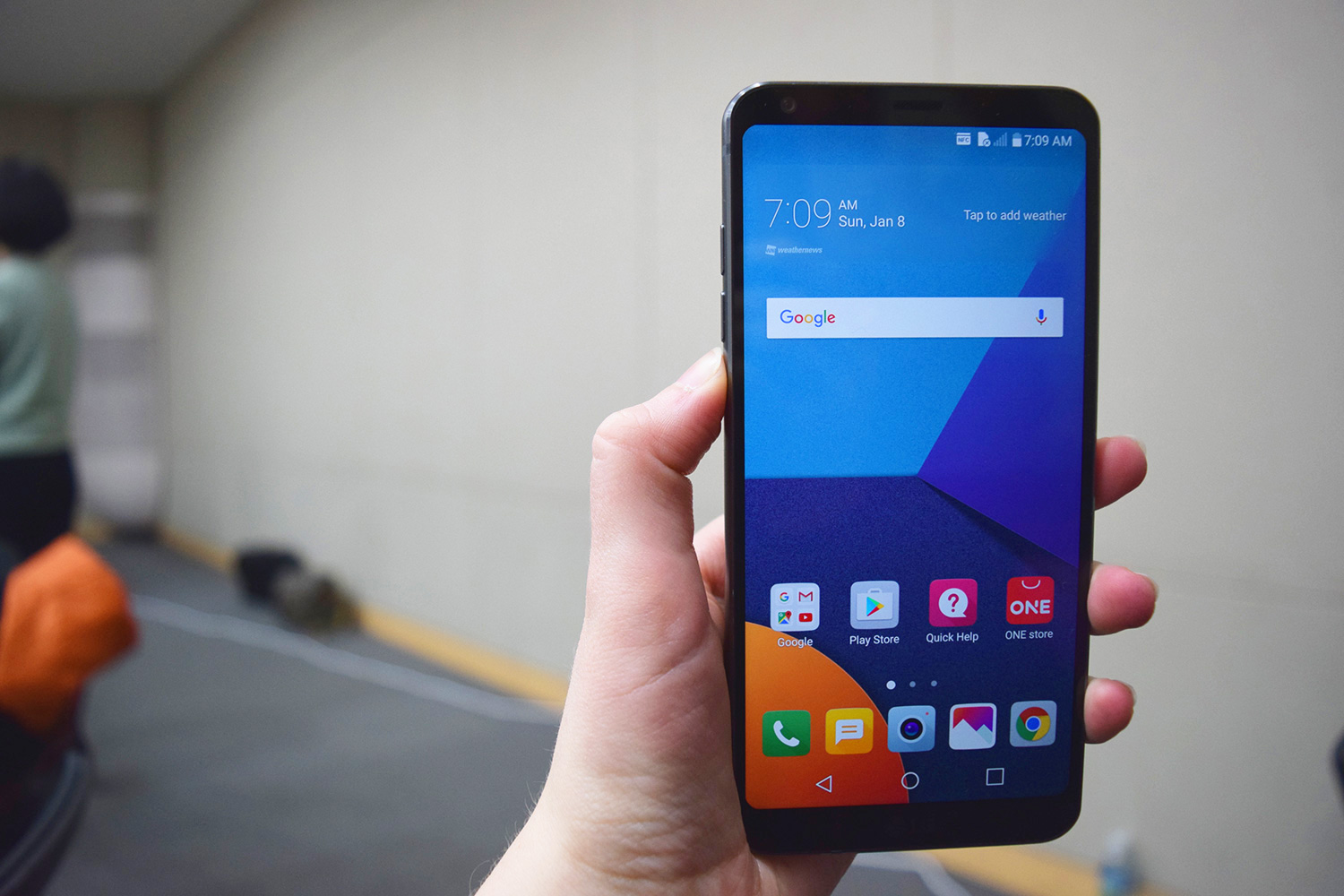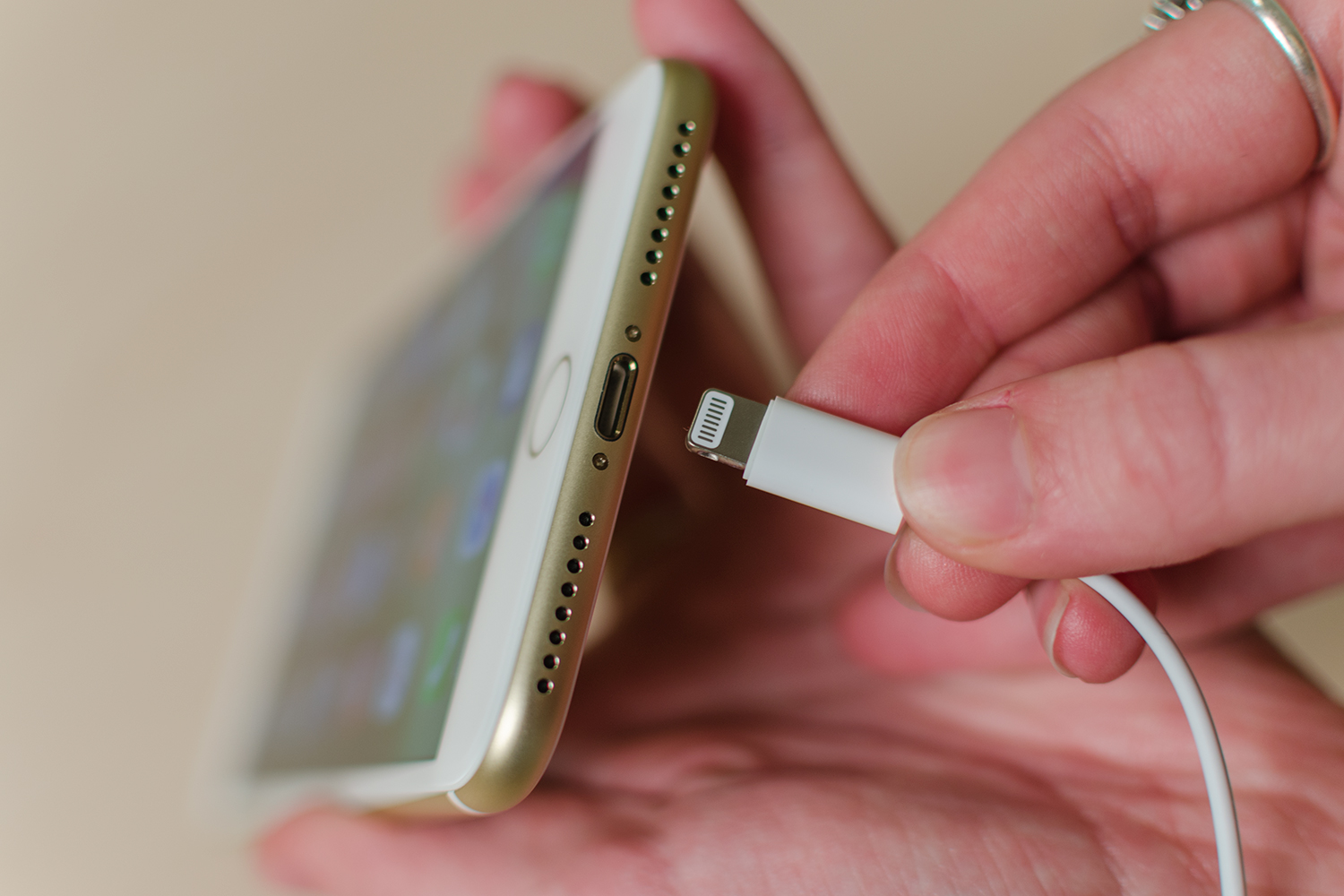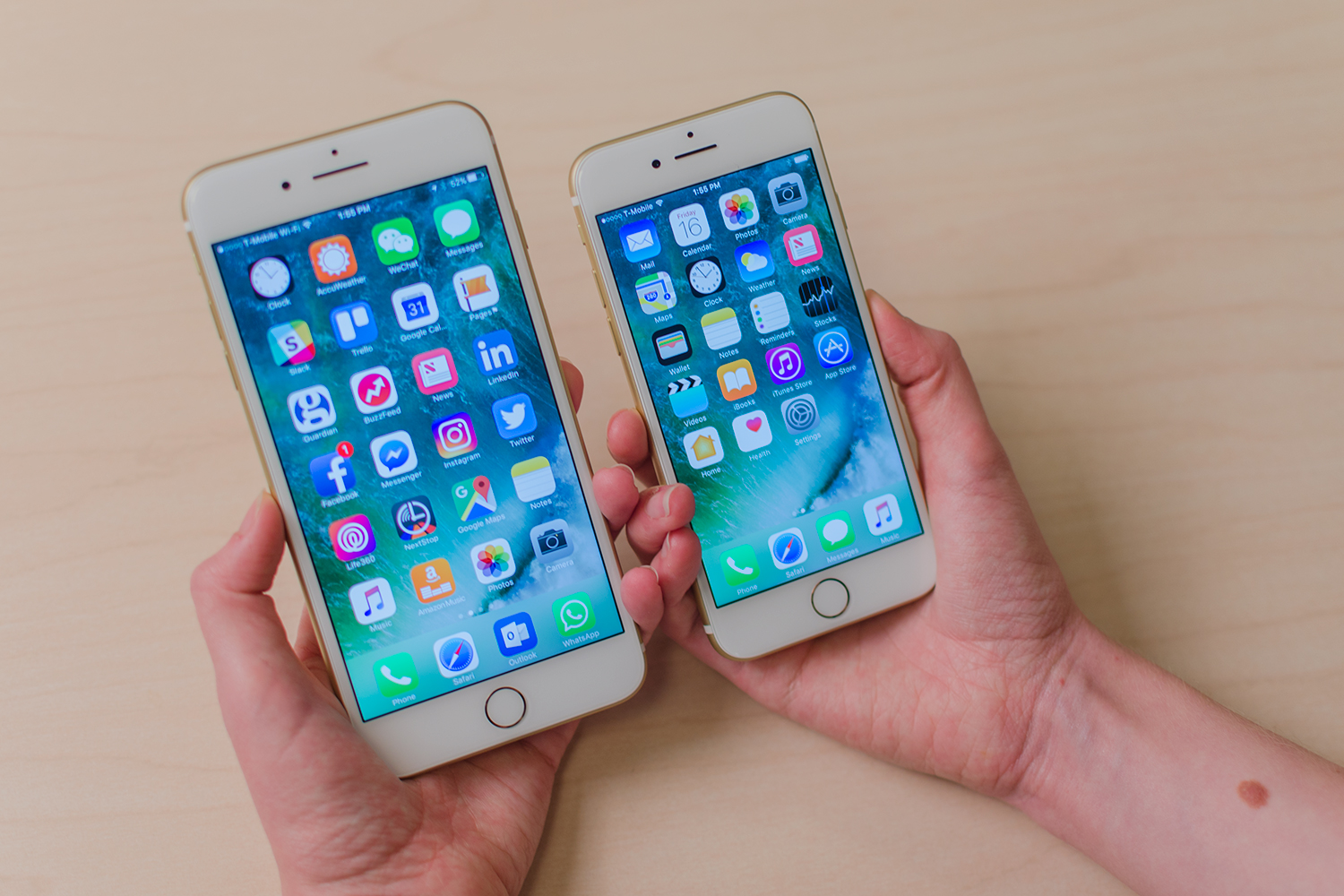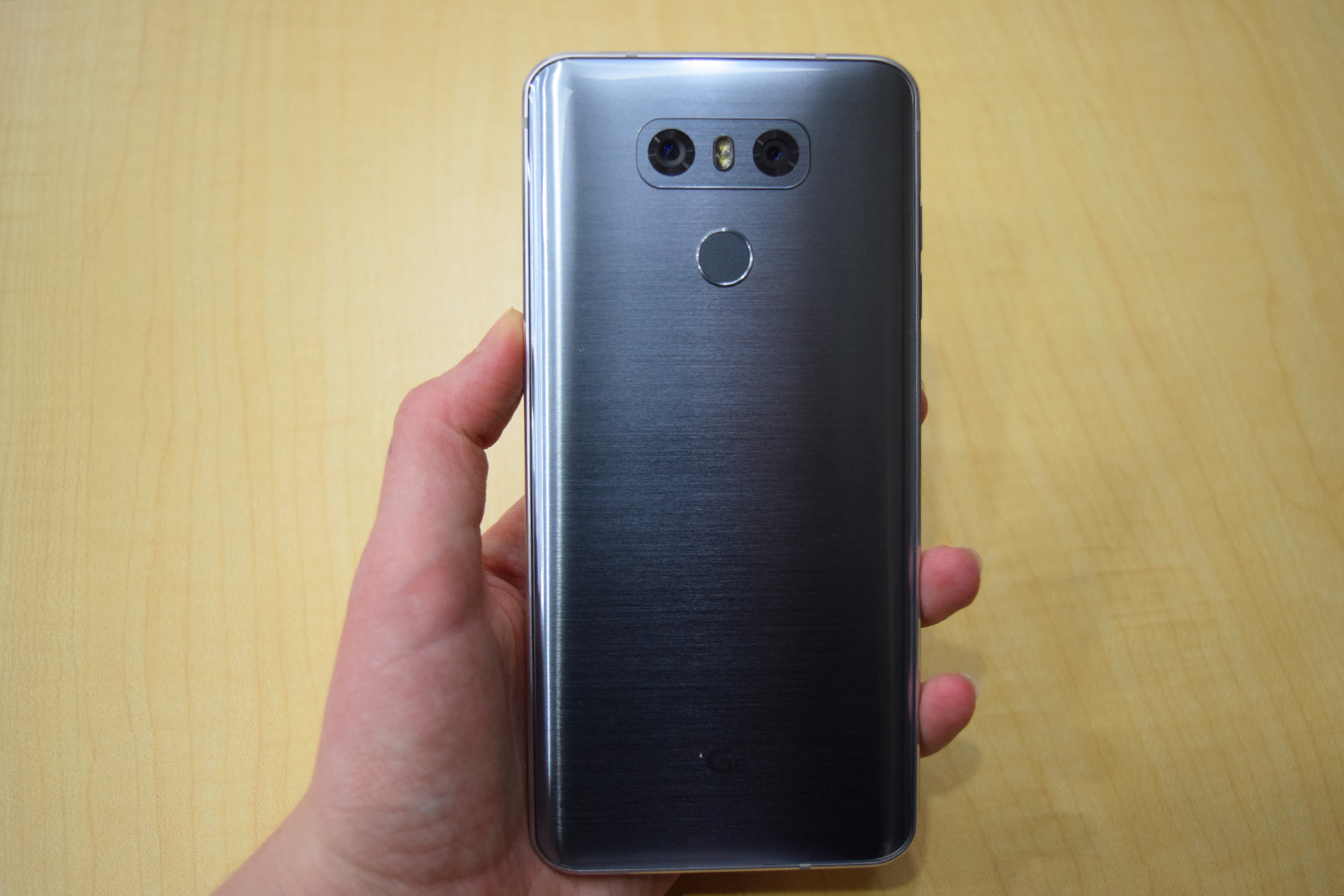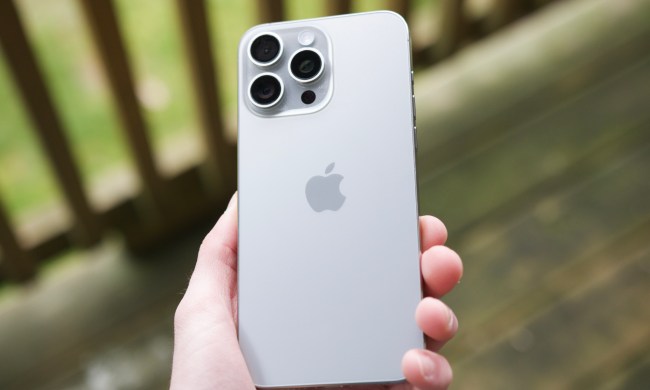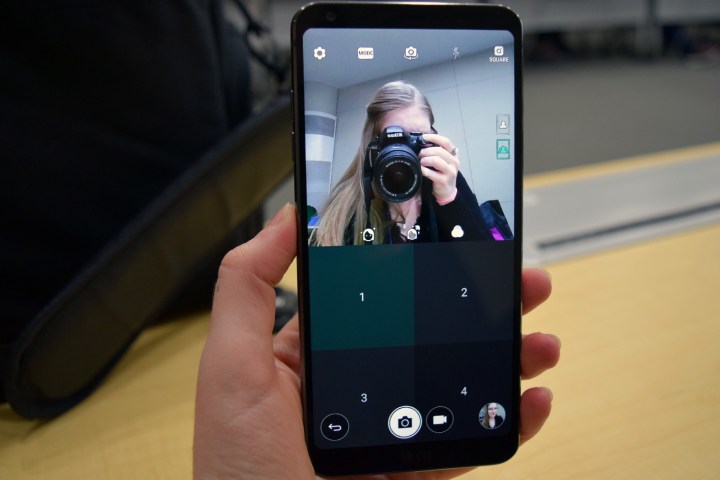
While it’s definitely one of the better Android phones currently available, the fact is that Android isn’t the only mobile operating system out there. Can the new G6 go up against Apple’s flagship phone, the iPhone 7 Plus? We put the two head to head to find out.
Specs and performance
 |
Apple iPhone 7 Plus  |
|
| Size | 148.9 x 71.9 x 7.9 millimeters (5.86 x 2.83 x 0.31 inches) | 158.2 x 77.9 x 7.3 millimeters (6.23 x 3.07 x 0.29 inches) |
| Weight | 5.75 ounces | 6.63 ounces |
| Screen | 5.7-inch IPS LCD | 5.5-inch IPS LCD |
| Resolution | 2,880 x 1,440 | 1,920×1,080 |
| OS | Android 7.0 Nougat | iOS 10 |
| Storage | 32/64GB | 32/128/256GB |
| SD Card Slot | Yes | No |
| NFC support | Yes | Yes (Apple Pay Only) |
| Processor | Qualcomm MSM8996 Snapdragon 821 | Apple A10 Fusion |
| RAM | 4GB | 3GB |
| Connectivity | Wi-Fi, 4G LTE, HSPA | Wi-Fi, 4G LTE, HSPA |
| Camera | Front 5MP, Rear dual 13MP | Front 7MP, Rear dual 12MP |
| Video | 2,160p 4K UHD | 2,160p 4K UHD |
| Bluetooth | Yes, version 4.2 | Yes, version 4.2 |
| Fingerprint sensor | Yes | Yes |
| Water Resistant | Yes, IP68 | Yes, IP67 |
| Battery | 3,300mAh | 2,900mAh |
| Charger | USB-C | Lightning |
| Quick Charging | Yes | No |
| Wireless Charging | Yes, WPC and PMA | No |
| Marketplace | Google Play Store | Apple App Store |
| Color offerings | White, black, platinum | Rose Gold, Gold, Silver, Black, Jet Black |
| Availability | TBD | AT&T, Verizon, Sprint, T-Mobile |
| DT Review | First Take | 4 out of 5 stars |
When it comes to specs, it can sometimes be a little hard to compare iPhones and Android devices. That’s because of the fact that while Android phones generally use the same processors, Apple designs its own chips for use in the iPhone. Still, there are things that we can compare.
The LG G6 makes use of the Qualcomm Snapdragon 821 processor, which is only second to the upcoming Snapdragon 835 chip. To compare, Apple uses its self-built A10 Fusion chip, which has been hailed as one of the best smartphone chips ever built. In fact, when it comes to benchmarks, the Apple A10 Fusion puts anything else on the market to shame. In one AnTuTu benchmark test performed by Android Authority, the Apple A10 Fusion scored a hefty 150,000, while the Snapdragon 821 hit 141,092. On Geekbench S, however, the A10 Fusion scored a whopping 3,399, more than doubling the Snapdragon 821 score of 1,500.
Of course, things like the operating system will affect those scores, but the fact is this — the A10 Fusion chip is more powerful than the Snapdragon 821.
The RAM situation is a little different. On paper the LG G6 has 4GB while the iPhone 7 Plus only has 3GB. Still, those figures don’t really mean much if the iPhone performs better in the real world.
When it comes to storage, the LG G6 has the option of either 32GB or 64GB of storage. The iPhone has 32GB, 128GB, or 256GB, however the G6 also has a MicroSD card slot, so you can expand your storage if you so choose.
Android fans, brace yourselves: The iPhone 7 Plus is the winner in the performance department. The processor is faster, and while the G6 has an extra 1GB of RAM, the fact is that even in real-world tests the iPhone performs better. That could be due to operating system integration, or a range of other factors — but it doesn’t really matter what the reason is.
Winner: Apple iPhone 7 Plus
Design
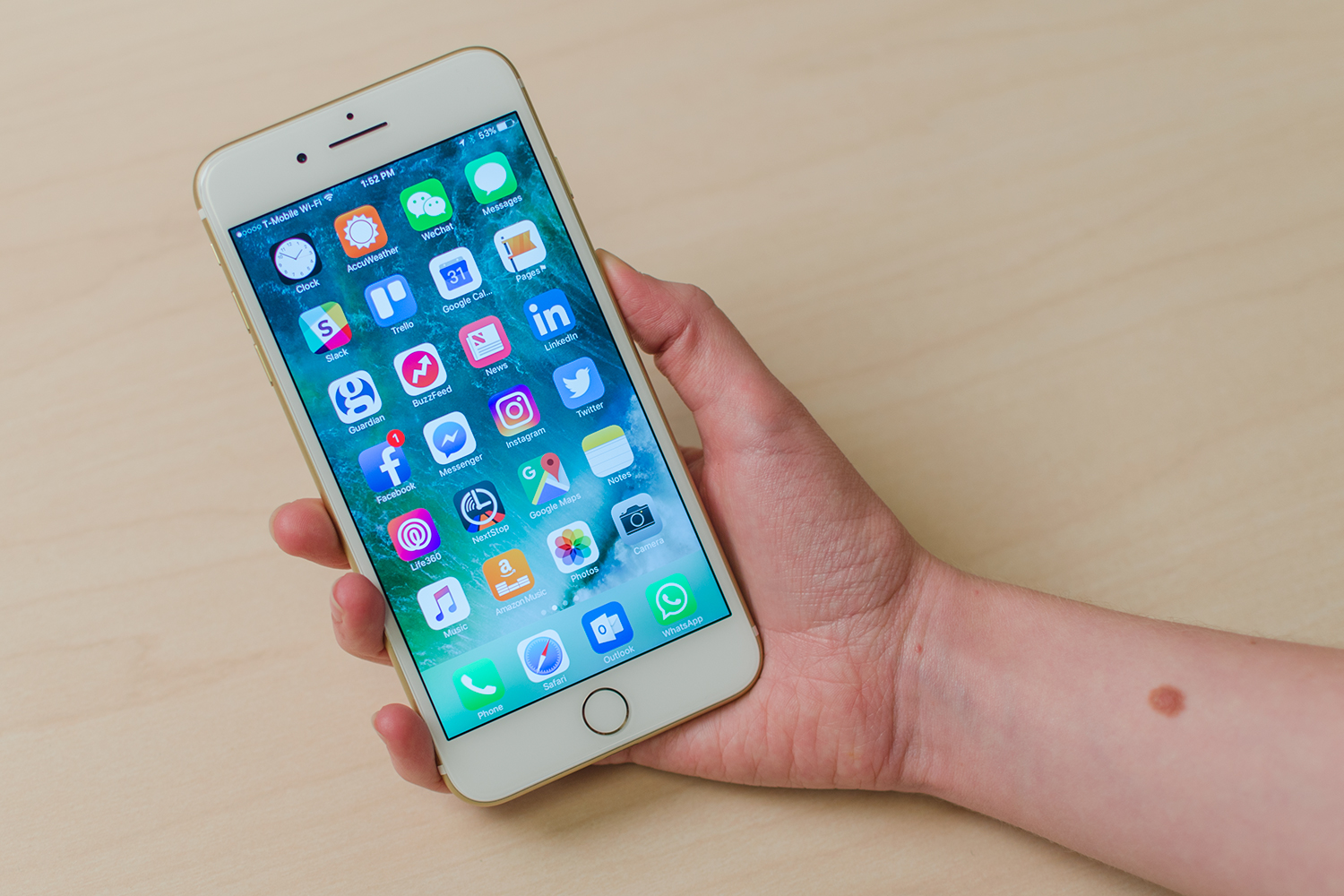
LG has really stepped things up with the design of the G6, which looks great. For starters, the phone features a display that covers a massive 80 percent of the front of the phone — and that display has beautifully rounded corners. It’s really quite a nice look. On the back of the phone, you’ll find the dual-camera, as well as the fingerprint sensor. The phone in general features a nice-looking glass design with metal around the edges.
Of course, the iPhone has long been hailed as the design king in the smartphone department. The iPhone 7 Plus features a largely metal design with a small camera bump on the back for that dual-camera setup. While the camera bump is a bit of a bummer, the iPhone is also thinner than the LG phone, and that could be why the camera bump is a necessary addition.
Design is largely subjective, but the new LG G6 looks great with its large display and no camera bump. Although the iPhone is traditionally stylish, the G6 uses new tech to make the phone’s body smaller even as the screen grows to 5.7 inches. The near elimination of the top and bottom bezels makes the G6 more attractive and comfortable to hold.
Even though we don’t like glass designs because they’re breakable and attract fingerprints, we’ll have to give this one to the LG G6 because of the big display and slimmed down bezels. It makes the iPhone look old fashioned. Of course, if rumors are to be believed, Apple’s iPhone 8 (or iPhone X) is rumored to have eliminated bezels to maximize the screen, too.
Winner: LG G6
Display
The display is an important aspect of any smartphone. After all, that’s what we use to actually access all of your information. Turns out, LG has really hit the nail on the head when it comes to the display on the G6. The G6 features a 5.7-inch LCD display with a resolution of 2,880 x 1,440 pixels. The Apple iPhone 7 Plus, which has a 5.5-inch display, also uses LCD technology — but the resolution is quite a bit smaller, sitting at 1,920×1,080.
Both the G6 and the iPhone 7 Plus have their own display features. The G6’s display features rounded corners, which looks great — however the iPhone 7 Plus adds 3D Touch, which gives users an extra way to control the device.
Apple is rumored to be moving over to OLED technology soon, which should offer brighter colors and be slightly better on battery consumption, but for now the company is beat by LG.
Winner: LG G6
Battery life and charging
The LG G6 features a 3,300mAh battery, and while we don’t yet know exactly how long it will last, it should last at least through the day with medium use. It’s also a higher capacity than the Apple iPhone 7 Plus’ 2,900mAh battery. Apple has had a notoriously rough time with battery life, and the iPhone 7 Plus is no exception, though it is much better than any other iPhone.
On top of that, the G6 features both Quick Charge 3.0 and wireless charging in the U.S., so the phone will charge quickly and can charge wirelessly. There’s no denying who the winner is here.
Winner: LG G6
Camera
Apple has long been hailed as offering some of the best smartphone cameras on the market, but it has been facing increased competition in the past few years. The iPhone 7 Plus features a dual rear-facing camera, and both sensors are 12 megapixels. One sensor offers a f/1.8 aperture, while the other sports a f/2.8, so the camera should cover all your needs as far as lighting goes. Other features include optical image stabilization and phase detection autofocus.
The G6, at least on paper, seems to offer a better camera. The both of the two lenses on the camera sit at 13MP, with one offering a f/1.8 aperture and the other sitting at f/2.4. On top of that, the camera offers optical image stabilization and laser autofocus.
We’ve been testing the two cameras against each other, and the G6 obviously wins with wide-angle shots. However, for other photos, the iPhone seems to produce more natural looking shots, and the blurred background effect in Portrait mode is fantastic. The iPhone’s killer feature is really 2x optical hardware zoom, though. it’s a great feature that sets it apart from the rest and helps you take better pictures from afar. It’s indispensable for anyone who goes to concerts or events. We think the iPhone wins this round (for now), but we’ll have to put the G6 through more tests.
Winner: iPhone 7 Plus (for now)
Software
This one is perhaps the biggest point of difference between the two phones, and we’ll say upfront that we’re not going to award a winner here — the old Android vs iOS debate rages on, and the conclusion is this: it’s up to personal preference. That doesn’t mean we’re not going to highlight some of the difference between the two operating systems.
In general, the rule is this: Android can do more, but iOS is easier to use and arguably better at doing what it can do. Of course, just because “Android can do more,” that doesn’t mean you necessarily need an Android phone. The vast majority of people just don’t need to be able to do the things that Android can do and iOS cannot. For example, most people don’t need the level of customization offered by Android, nor do they need to be able to access system files that can be edited and tweaked easily. For the most part, a phone is used to communicate, make calls, text, use apps, and so on. The iPhone does all of those things — and it does them very well.
Apple’s iOS does get more timely updates, meaning it’s more secure, so that is something to consider.
Winner: Tie
Durability
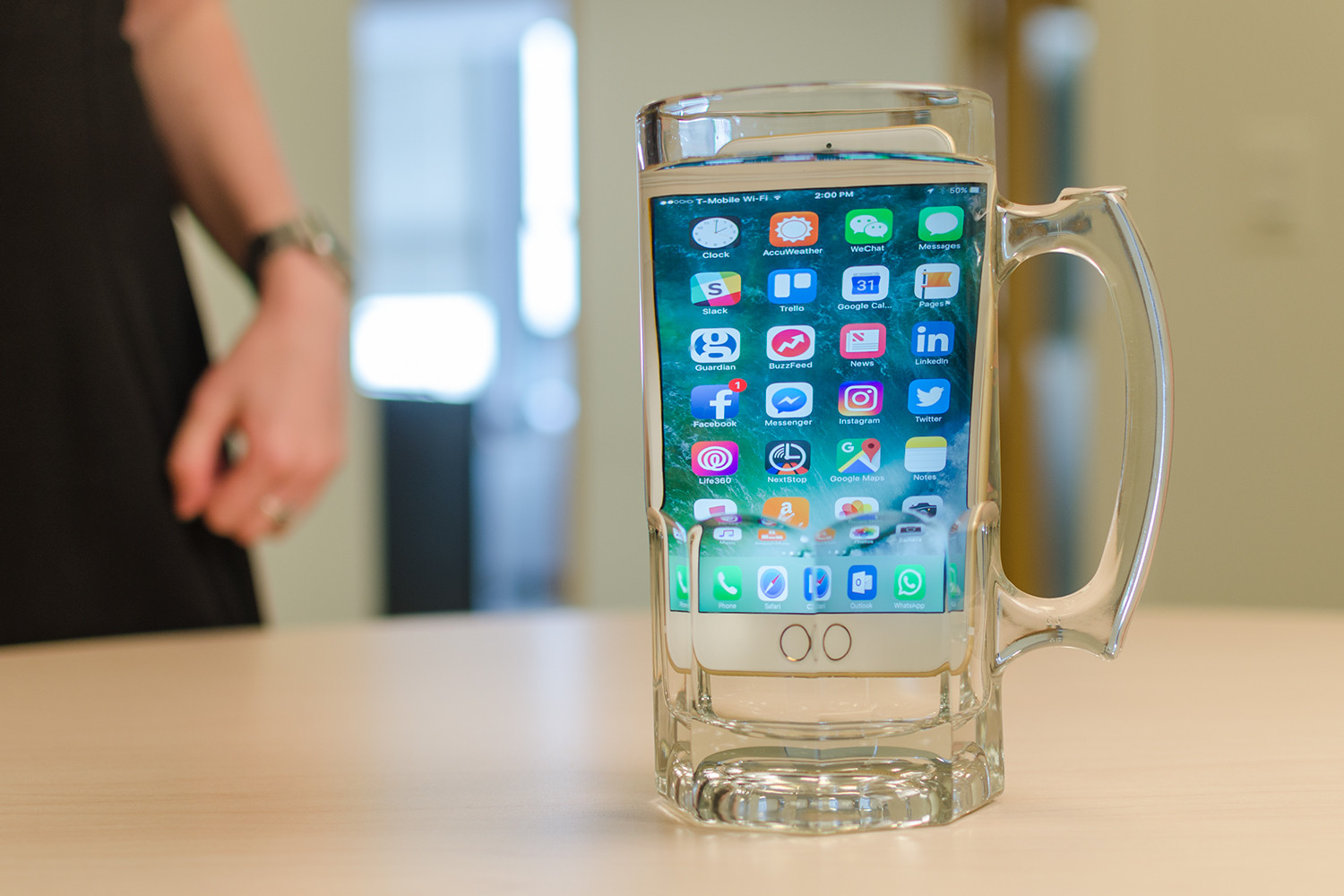
Apple has seriously stepped things up with the iPhone 7 and 7 Plus in durability. In fact, for the first time ever, the iPhone is now waterproof — which is a huge deal. The devices boast IP67 water and dust certification, meaning that it is protected from dust and can withstand being submerged in about 1 meter of water for as long as 30 minutes.
While that’s a big deal for the iPhone, many Android phones have had waterproofing for years — the LG G6 boasts an IP68 certification, meaning it is dust proof and can withstand as much as 1.5 meters of water for 30 minutes. It’s a small difference, but it could be the difference between your phone working or not.
Of course, dust and water aren’t the only aspects to durability — and while the iPhone lags slightly behind in that department, it regains some points in build. The G6 is built with two panes of Gorilla Glass 3, and while that’s strong glass, it’s still glass. The iPhone, on the other hand, did away with the all-glass build after the iPhone 4S, and since then has used a lot more metal — so if you drop it, it’s less likely to break. In other words, the G6 is (slightly) better with water, and the iPhone is (slightly) better with drops. This one’s a tie.
Winner: Tie
Price and availability
Flagship phones are always pricey, and these two are no exception to that rule. The Apple iPhone 7 Plus starts at $770, and is available now — and has been for some time. We haven’t yet heard all the details about the LG G6’s availability, so it’s a little hard to compare the two — but we do know that the phone will be available in Korea starting on March 10, and will come at a price of 899,800 won, or around $796.85. That’s quite a lot — but that price could change for a U.S. release once we get one. We’ll have to wait to declare a winner until then.
Winner: Tie
Winner
Both the iPhone 7 Plus and the LG G6 are excellent phones — and you can’t go wrong with either of them. If you’re already plugged into the iOS ecosystem, get the iPhone. If you’re a tried and true Android user, the G6 is a great option.
If, however, you could go either way, the LG G6 is the winner here. While the iPhone is slightly more powerful, the G6 has a better display, a more modern design with its small bezels, as well as better battery life and charging capabilities. Those are features that can’t be ignored.

